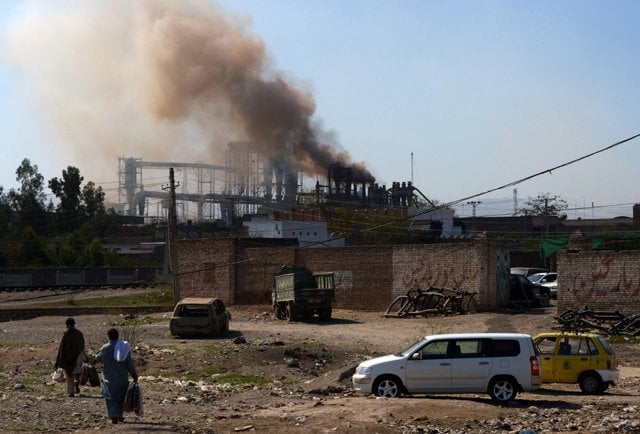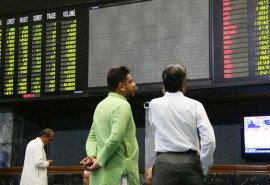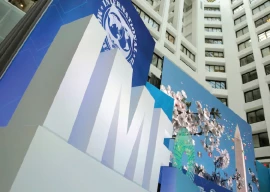
The 1961 episode of Rod Sterling’s TV series ‘The Twilight Zone’ tells a horror story of climate breakdown where the mercury in New York City reads 110 degrees even at midnight and it seems as if the world has been ‘handed a death sentence.’ Fast forward to 2021, we note that temperatures in Kuwait soared as high as 127.7 degree Fahrenheit while Pakistan’s Jacobabad recorded a maximum of 125.6 degrees Fahrenheit on July 1.
With the world on fire, climate change no longer looks like a fantasy and it is as real as it gets. The sixth assessment report by the Intergovernmental Panel on Climate Change (IPCC) paints a bleak picture of the planet’s condition in 2050 and there is a consensus to build on the Paris Accords to fight the ‘war on climate change’. As world leaders meet at Glasgow for the annual conference of parties (CoP26) to discuss the incomplete agenda of Paris CoP21, the real contention will be climate finance as rich countries have been falling short on their commitments to help the developing nations.
The pledge by the developed world in 2009 to provide $100 billion annually to the developing countries by 2020 could not be met even though the US and the UK have doubled their commitments through 2025 this year. This scarcity of funds highlights the need for a market-based mechanism that allows the use of international carbon offsets to meet national goals. Article 6 of the Paris agreement seeks to build consensus on developing rules of business for regulating carbon markets, but Madrid talks broke down in 2019 due to the complex nature of such negotiations.
Under an emissions trading scheme (or cap-and-trade system), there will be a cap, allocated through permits, on how much emission is allowed to a company. If it needs more emission permits, it must buy credits from another company that requires fewer permits. Around 50 countries have a cap-and-trade system already in place and Article 6 aims to develop a homogeneous accounting framework for linking these emission trading schemes to seamlessly transfer carbon credits internationally.
International carbon markets, regulated by UN, could allow countries to purchase emission reductions from nations that have slashed emissions more than they initially pledged for. By allowing countries to trade greenhouse gas emission credits across borders, nations with lower level of emissions could sell their quota to large emitters. For example, China could partially fund Nepal to build a wind-based project instead of a coal plant and buy carbon credits instead. This swap transaction will help China decrease its emission reduction shortfalls while Nepal can benefit from green energy financing.
However, the issue with Emissions Trading System (ETS) is an inherent conflict of interest between the option to buy cheap carbon credits and to commit more for climate action. Countries may also be selling their carbon credits instead of using them to meet their own targets as per their NDCs (Nationally Determined Contributions). Moreover, as the credits are linked with ‘additional’ reductions, billions of tonnes of carbon credits could be claimed thanks to weak NDCs that could be easily exceeded.
Then there is also an issue of double counting as both the seller and the buyer of credits may be claiming emission reductions. Many stakeholders believe that a part of credits sold should be cancelled and not counted towards any NDC - to ensure overall mitigation in global emissions. This idea however stays controversial and is regarded as a form of tax to discourage carbon trade. EU believes that the nation initiating the sale should not be allowed to count those credits towards achievement of its own NDC goals, but Brazil and many other states have objected to this idea.
Emissions trading systems are often confused with offsetting mechanisms which involve adjustment or regularisation of exceeded caps in an ex post facto fashion. So, while ETS is future oriented and could lead to net reductions, offsetting is merely a zero-sum game, and no net reductions are expected in that system.
In nutshell, a poorly regulated offsetting mechanism or even emissions trading systems may not necessarily mean a decline in net emissions for the planet. As the carbon market remains fragmented and plagued with fundamental flaws, world leaders at CoP26 will have to be blue in the face to reach consensus on carbon market rules. This is by no means a trivial task, albeit not an impossible one.
The writer is a Cambridge graduate and is working as a strategy consultant
Published in The Express Tribune, November 1st, 2021.
Like Business on Facebook, follow @TribuneBiz on Twitter to stay informed and join in the conversation.

1732071267-0/lana-(2)1732071267-0-405x300.webp)
1727242355-0/Diddy-(1)1727242355-0-165x106.webp)

1732063440-0/elon-(3)1732063440-0-165x106.webp)













COMMENTS
Comments are moderated and generally will be posted if they are on-topic and not abusive.
For more information, please see our Comments FAQ